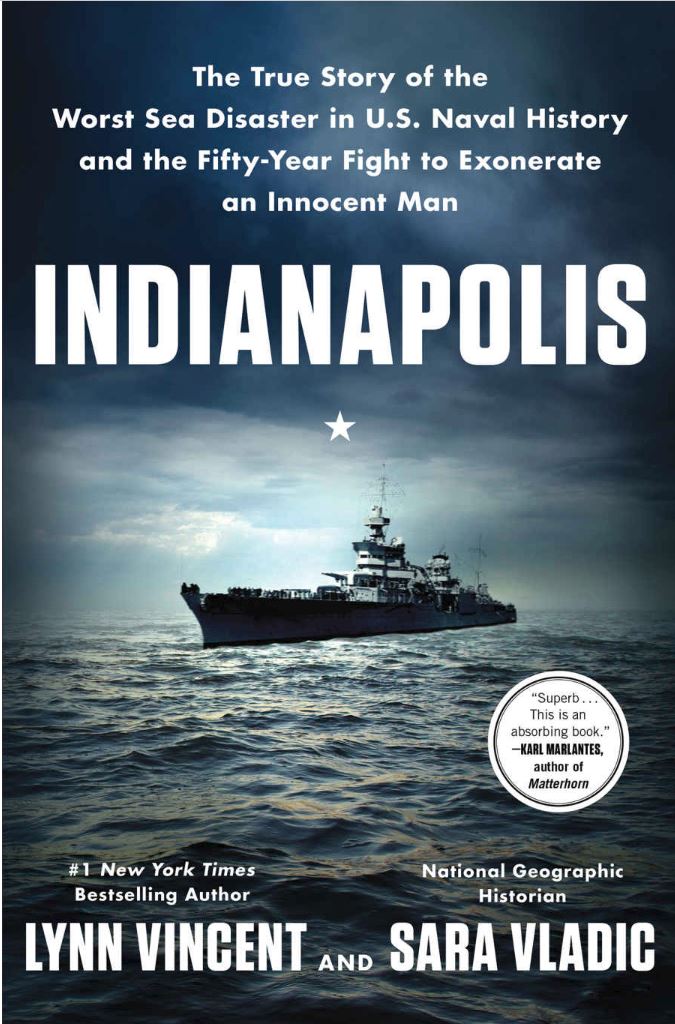This past Monday, I finished an excellent book – “Indianapolis: the True Story of the Worst Sea Disaster in U.S. Naval History and the 50 Year Fight to Exonerate and Innocent Man” by Lynn Vincent and Sara Vladic.

Some of you may only know of the USS Indianapolis from the memorable scene in the movie “Jaws,” with the character Quint (played by Robert Shaw)
The story starts much earlier. The USS Indianapolis (CA-35) was a cruiser that served exceptionally well in the Pacific during World War II. She fought in most of the major battles and served as the flagship for the Fifth Fleet. She was struck by a kamikaze off Okinawa, returned to California for repairs, and then transported the core of the atomic bombs to the island of Tinian.
Several days before the end of the war, she was torpedoed while transiting alone between Guam and the Philippines Islands. Nearly 300 of her 1,200-man crew died in the attack and she sunk in under 15 minutes. 900 men abandoned ship, but when the rescue came five days later, only 316 survived. Those five days were horrific on many levels. Many of those who were rescued never really recovered, struggling with alcohol and drugs. The Commanding Officer, Captain Charles B. McVay III, committed suicide in 1968.
Tuesday, I commemorated September 11, 2001 at a service hosted by Lieutenant General Gary Volesky, the Commander of I Corps at JBLM (BTW – he is a Central Washington University graduate).
General Volesky reminded us about the many heroes of that day – in Manhattan, at the Pentagon, and in a field in Pennsylvania. He also recalled that units from JBLM were some of the first to respond to the attacks. The 2nd Battalion, 75th Ranger Regiment “led the way,” followed shortly by the 1st Special Forces Group. 17 years later, I Corps still have more than 4,000 soldiers deployed overseas in the Global War on Terror.
The general knows a lot about combat and its costs. In 2004, then Lieutenant Colonel Volesky, was leading a battalion in Iraq when the war took a dramatic escalation on “Black Sunday.” One of his platoons was ambushed while out in the city. Over the next 48 hours of intense combat, it took everything he had to locate and rescue his platoon. This story is told powerfully in the National Geographic miniseries called “The Long Road Home.”
Poignantly, the “long road home” applies to both the platoon getting back to the safety of their base, and the impact of wounds – both physical and mental – on many of the soldiers who fought. The long road home continues long after the echo of the final bullet fades.
In addition to the 17th anniversary of 9/11, this week is also National Suicide Prevention Week. And, clearly, we must find a better way to help our neighbors in Pierce County. Three people commit suicide every day in Washington State – one every eight hours. Washington’s suicide rate of 15 per 100,000 people is higher than the national rate of 13. Pierce County’s rate nearly doubled from 12 per 100,000 population in 2007 to 20 in 2016. The rate among veterans is even higher – at 30.
Behind each one of these statistics are real people. Men and women who served their country and never could find the road home.
That is why I am very thankful that the Cohen Veterans Network will be opening a mental health clinic to serve post-9/11 veterans and their families in Lakewood later this Fall. They have proven expertise in helping those who served, regardless of their ability to pay, including same day care. For someone who is depressed and considering suicide, an appointment in 30 days is not helpful.
I am hopeful, that for many of our residents, who have served our country in the last 17 years – often with multiple deployments overseas – the road home will get a little shorter.
Thanks for reading,

Bruce
